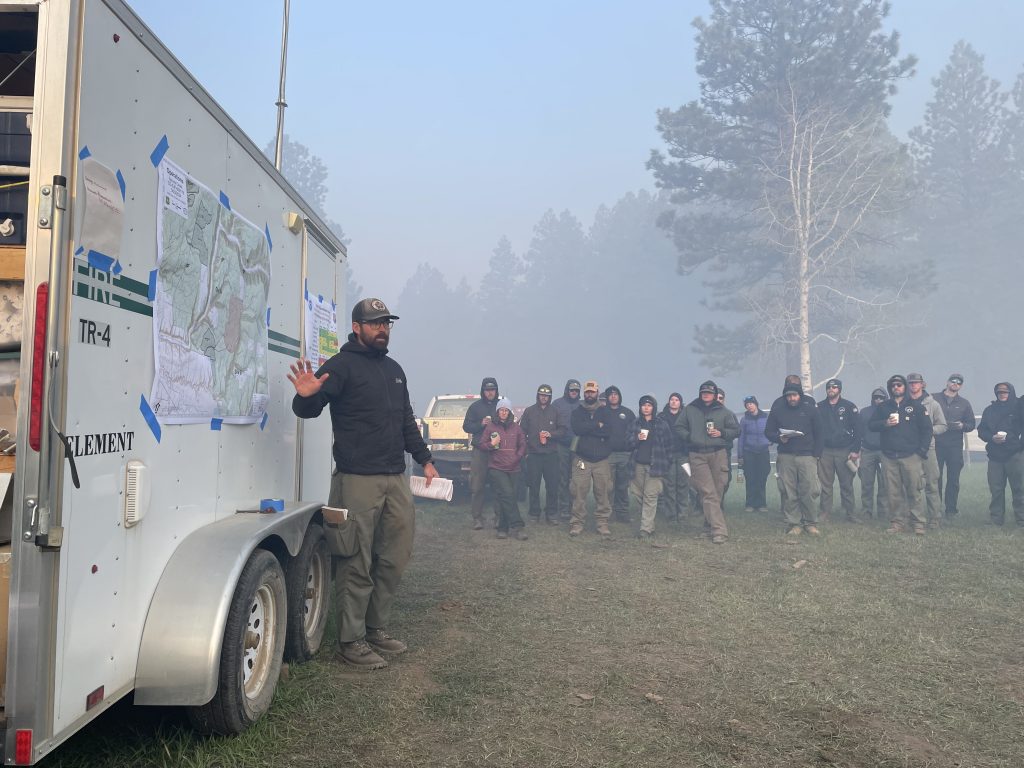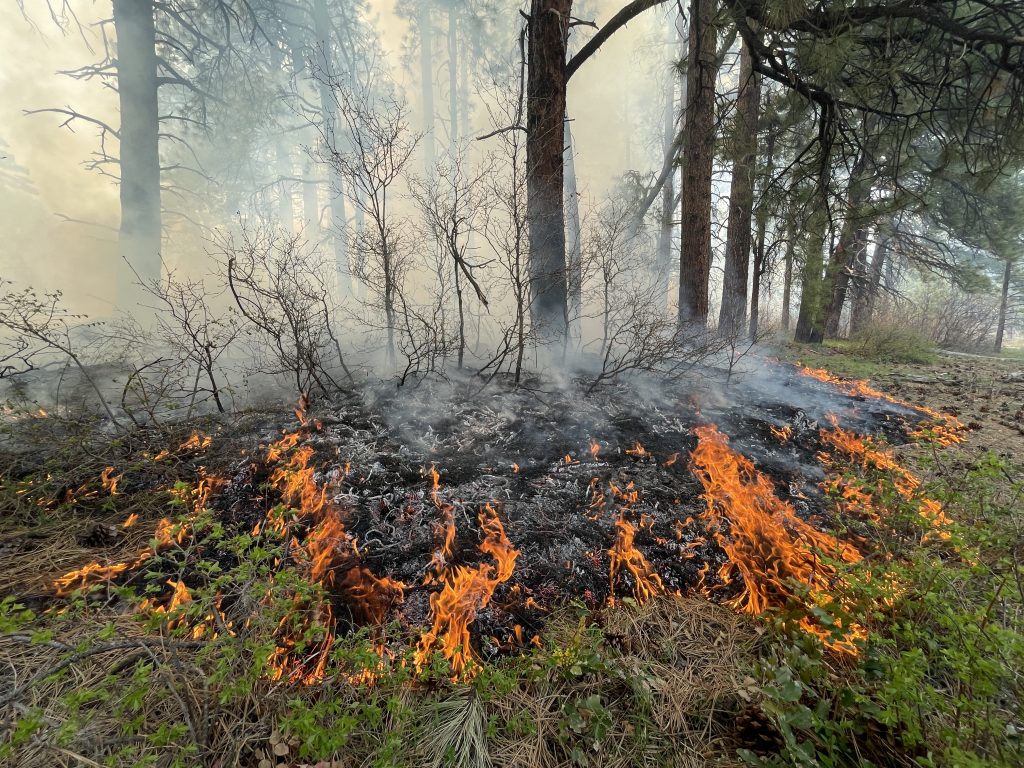Natural Ignition Spurs Innovative Fire Management in San Juan National Forest
EDGEFIELD, S.C. — On May 14, a lightning strike sparked the Spruce Creek Fire 11 miles Northeast of Dolores, CO on Haycamp Mesa in the San Juan National Forest. This fire presented an uncommon opportunity for the Dolores Ranger District to employ indirect tactics for forest restoration and enhance community safety.
The Spruce Creek fire ignited within a network of forest system roads that fire managers identified as ideal containment lines. Thanks to favorable weather and fuel conditions, firefighters were able to burn out the interior of the road system, guiding the fire to these lines rather than building new ones at the fire’s edge.
The 5,699-acre fire burned with low-to-moderate intensity in heavy timber, Gambel oak and deep duff (a dense layer of partially decomposed pine needles). Removing this highly flammable vegetation is a step toward protecting local communities and infrastructure from the risk of future high-intensity wildfires. Additionally, the restorative nature of wildfire in this fire-adapted ecosystem is a secondary benefit.

“We [used] this natural ignition to maximize the positive effects from fire and minimize the negative effects of catastrophic fire,” said Nick Mustoe, District Ranger for the Dolores Ranger District. “This means making wise choices about our fire response in ways that reduce the long-term risks to our watersheds and communities and allow fire to play the role it has in our forests for millennia.”
Fire is an intrinsic component of natural ecosystems, and the Rocky Mountain Restoration Initiative endeavors to foster forests that are resilient, healthy and prepared to receive fire. Currently, the RMRI encompasses three focal landscapes across Colorado: Upper South Platte, Upper Arkansas and Southwest Colorado. In Southwest Colorado alone, which includes Dolores and the San Juan National Forest, RMRI partners have restored 83,124 acres of public and private land since 2020.
Utilizing fire as a management tool is crucial for fostering healthy and resilient forests. When applied at the appropriate intensity and location, fire can be used to reduce wildfire risk to communities—a primary focus of the San Juan National Forest. Fire often also offers numerous benefits to both the forest ecosystem and the wildlife species reliant on it. Firefighters and forest managers harnessed this natural ignition to mitigate the potential for catastrophic wildfires in the future. By targeting hazardous fuels under favorable conditions, they diminished long-term risks to communities. This strategic approach seeks to foster healthier, more resilient forests while concurrently minimizing risks to communities.

Considerable effort and funding are invested in forests across the West, getting forests ready to receive fire, which is inevitable and natural on the landscape. In Southwest Colorado, the diligent work undertaken by RMRI partners over the past few years has been instrumental in preparing the landscape and our communities for fire. Good project work on private, state, tribal or federal land creates forests that are resilient to disturbances, like fire, and is critical for protecting communities.
Ongoing RMRI projects within the San Juan landscape are planned to reduce fuels to create resilient forests and enhance community preparedness for future wildfire events.
About the National Wild Turkey Federation
Since 1973, the National Wild Turkey Federation has invested over half a billion dollars into wildlife conservation and has positively impacted over 23 million acres of critical wildlife habitat. The NWTF has also invested over $10 million into wild turkey research to guide the management of the wild turkey population and to ensure sustainable populations into perpetuity. The organization continues to deliver its mission by working across boundaries on a landscape scale through its Four Shared Values: clean and abundant water, healthy forests and wildlife habitat, resilient communities, and robust recreational opportunities. With the help of its dedicated members, partners and staff, the NWTF continues its work to provide Healthy Habitats. and Healthy Harvests. for future generations.
CONNECT WITH US
National Wild Turkey Federation
770 Augusta Road, Edgefield, SC 29824
(800) 843-6983
National Wild Turkey Federation. All rights reserved.
